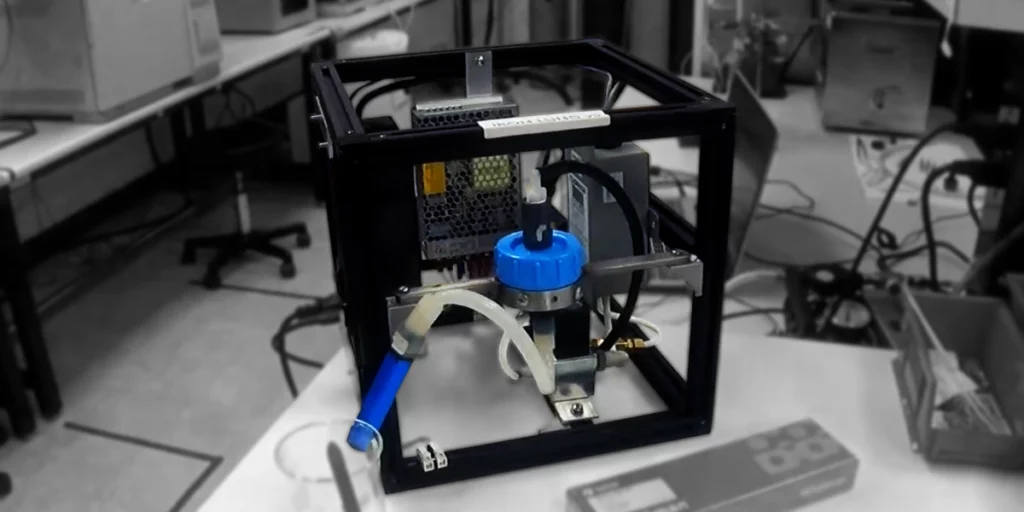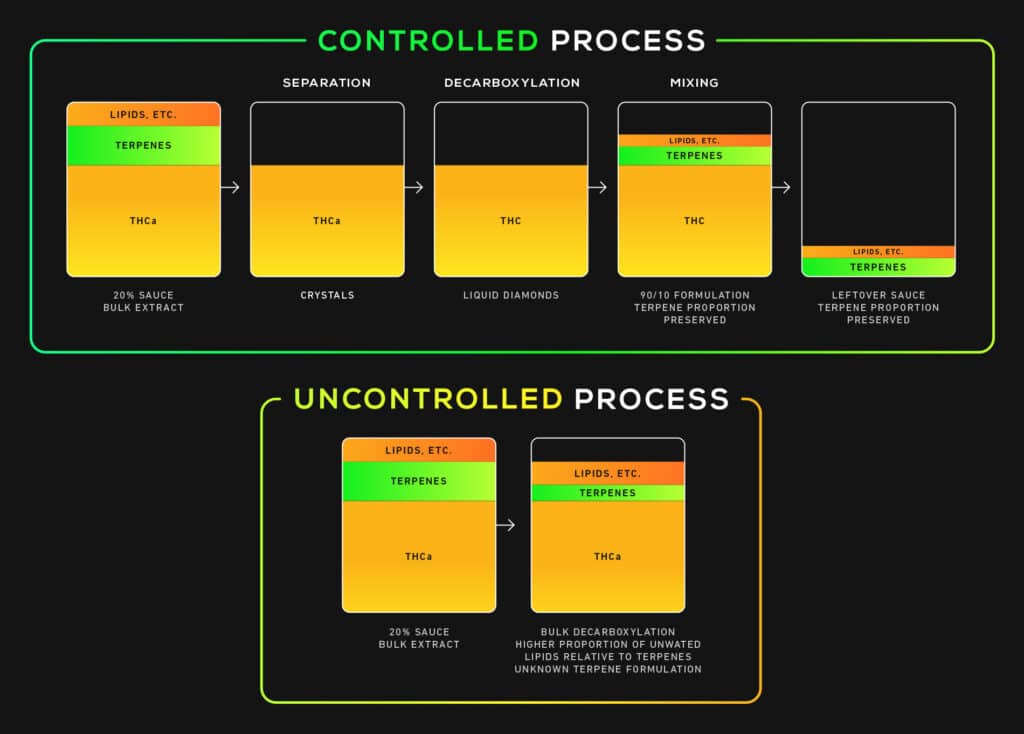After exploring the reasons why vape cartridges fail in our previous blog post, it’s time to dive into the science of measuring vape cartridge success. Joining us again is Jake Rubenstein, the President and CEO of N.N. Analytics. In this blog, Jake shares his expertise on how Vape-Jet, N.N. Analytics, and other contributing factors ensure your cartridges perform at their best for a premium vaping experience.
- What Leads to a Vape Cartridge Success?
- How N.N. Analytics Can Resolve Your Vape Cartridge Failures
- Standard Measurements We Use at N.N. Analytics
- Guaranteeing Vape Cartridge Success: Measuring Solution Rheology and Cartridge Performance
What Leads to a Vape Cartridge Success?
Before we get into the finer scientific details of vape cartridge success, we should look at the factors that lead to a premium vaping experience. Here are the key elements that contribute to successful vape cartridges we’ve seen at N.N. Analytics:
- Ensure your vape cartridge performs the same when full, half-full, or near empty without leaks, clogs, or dry hits.
- Correct amount of delivered aerosol—correct standard Aerosol Collected Mass (ACM) between 25 to 60mg/puff in most vaping applications measured under a standard ISO regimen.
- Low-Pressure Drop (PD) values—a properly assembled cartridge with an oil that has a matched rheology will not have a high PD value when compared to a control sample.
- Lack of leaks through the 510 center-post—minimal device weight loss (DWL) is measured throughout the lifetime of a cartridge that was not captured or measured as Aerosol Collected Mass (ACM).
- Lack of evaporation through the 510 center-post—minimal device weight loss (DWL) as measured throughout the lifetime of the cartridge that is not captured and measured as Aerosol Collected Mass (ACM).
- Lack of leaks into the center post by way of the failure modes identified above.
- Lack of leaks through the mouthpiece by way of the failure modes identified above.
- The proper delivery of cannabinoids measured in the Aerosol Collected Mass (ACM) without deterioration by way of elevated coil temperatures and a lack of airflow through the cartridge.
What variables are critical for vape cartridge success?
- Choosing reliably vetted hardware with a proven track record and direct relationships with a trusted analytical lab.
- Confirming the compatibility between each type of cannabis oil and the hardware you intend to fill.
- Standardizing your formulation and enforcing process control throughout your extraction and filling operation to reduce variability in your oil output as measured by standard rheological assessments on a batch-by-batch basis.
- Confirming that the batch-to-batch variance does not fall outside of the approved rheological bracket defined for the cartridge-oil combination.
- A collaborative effort with open communication between the vape hardware manufacturer, vape filling machine manufacturer, vape testing facility, and you.
- The Vape-Jet product support team can tailor your filling temperatures and speeds to your formulation. N.N. Analytics can also develop and confirm with Vape-Jet the correct filling parameters that will support ideal cartridge performance without failure.
How N.N. Analytics Can Resolve Your Vape Cartridge Failures
N.N. Analytics facilitates the standardization of oil-hardware combinations with characterization testing. Our approach to resolving your vape cartridge failure challenges comes in two phases.
Phase One: Establishment of Approved Parameters
Rheology Characterization and Performance Assessment of Solutions for Cartridge Filling—this is where we characterize the oil solutions to understand how they perform in each hardware SKU. In short, this process helps us understand whether known rheology will affect the performance and failure rate of the cartridge part number that is approved for sale.
Failure Mode and Effects Analysis: Cartridge Performance Assessment (Leakage & Dry Hits)—we use this standard metric to evaluate a new part number in hardware that we haven’t assessed yet. We evaluate stability performance, including device weight loss, pressure drop, and aerosol collected mass. This testing is performed with standard solutions (oils) that are deployed by NN Analytics, meeting the criteria of low, medium, or high viscosity:
- Low Viscosity: Akin to rosin formulations or those with terpene additions of greater than 10%
- Medium viscosity: Akin to formulations that have a standard number of terpenes and are standard performers – This is our target range for most formulations
- High Viscosity: High potency oils with minimal terpene or diluent additions require optimum shear rates of cartridges tuned to high-viscosity oils.
Phase Two: Continual Evaluation of Approved Ranges
Stability Studies—used to evaluate the stability performance of a new batch of hardware by ACM/DWL and by delivered cannabinoid concentrations in the ACM.
Oil Performance Assessment—used to evaluate a new batch of oil manufactured to a specific recipe by rheological assessment and terpene/cannabinoid measurements in the ACM according to the standard (approved) reference sample.
Standard Measurements We Use at N.N. Analytics
Device Weight Loss
Device Weight Loss (DWL) measures the total change in filled mass of oil in a cartridge. This measurement is taken when the vape cartridge is filled and capped at T=0, then monitored throughout the lifetime of the cartridge during testing or stability studies before Aerosol Collected Mass (ACM) measurements are taken.
Over time, oil may leak or evaporate due to leakage or evaporation from an improper cap seal or airhole feed size that allows atmosphere to enter the vape cartridge by way of the center post or air inlets at the bottom of the cartridge, leading to reduced ACM, evaporation of volatile terpenes, and possible oxidation of cannabinoids.
DWL and reduced ACM are both causative variables of leakage that causes oil to emit from the 510 thread or air feed holes, which are indicative of a rheological mismatch of the oil viscosity with the hardware, namely:
- coil-wicking material porosity
- feed hole size
- airflow hole size
- Improper oil rheology
Aerosol Performance
Aerosol collected mass (ACM)—this variable determines the efficiency of the cartridge as a complete unit that will establish a parameter we call “ACM” for the amount of vapor emitted from the cartridge during normal expected vaping conditions.
ACM can be influenced by many factors and is considered a correlative variable for cartridge performance rather than a causative variable, such as device weight loss (DWL) or pressure drop (PD).
Aerosol Constituents
There are many constituents in cannabis and hemp aerosol, which we can classify as indicative of proper or improper performance. These measurements are taken hand-in-hand with aerosol collected mass (ACM) to understand the correct selection of good oil and hardware combinations during expected vaping conditions (ISO and CORESTA methods) and identify failures during vaping that may lead to emissions of harmful or potentially harmful constituents (HPHCs), such as:
- Heavy Metals
- Tested using ICP-MS
- Chromium (stainless steel parts or coil)
- Nickel (coil)
- Cadmium (stainless steel parts or coil)
- Lead (coil solder)
- Tested using ICP-MS
- Aldehydes
- Tested using GC/MS
- Volatile Solvents
- Tested using GC/MS
- Microplastics and solvated plastics
- Tested using LC/MS
- Other foreign material (coil-wicking material including ceramic particles, rayon, or cotton fibers)
- Tested by Scanning Electron Microscopy Tandem Energy-Dispersive X-Ray Spectroscopy (SEM/EDX)
Guaranteeing Vape Cartridge Sucess: Measuring Solution Rheology and Cartridge Performance
How do vape cartridge producers guarantee their solution will not leak when choosing new cartridge hardware?
The way to guarantee that leakage will not occur is to standardize the minimum “thickness” of the solution used in a particular hardware platform. N.N. Analytics accomplishes this with strict measurements of solution rheology to define the viscosity, shear rate, and elasticity of oils using an iso-accredited method for rheology measurements.
Additionally, N.N. Analytics measures coil performance by deploying its patent-pending Iron Lung aerosol collection technology to assess aerosol performance by measuring pressure drop, capturing the aerosol, and measuring the total weight and constituents within the aerosol. Pressure drop measurements allow us to evaluate leakage preventing aerosol delivery. Aerosol weight measurements allow for the characterization of atomizer/coil performance.

How can vape cartridge producers guarantee their solution will feed well when choosing new cartridge hardware?
The way to prevent dry hits is by standardizing the maximum thickness of the solution in a particular hardware platform.
Unleash Your Vape’s True Potential with Vape-Jet & N.N. Analytics
As you can see, the science behind a successful vaping experience requires cultivating a unique balance between the formulation of the oil, the hardware used, and the filling process.
At N.N. Analytics, we use a combination of measurements to ensure that your vape cartridges perform optimally and meet industry standards. Our expert team works closely with you, the vape hardware manufacturer and the vape filling machine manufacturer to resolve your vape cartridge failure challenges. Let N.N. Analytics help you achieve the premium vaping experience your customers deserve.

Need some help taking your vape cartridge filling performance to the next level? Reach out to our crew and learn how Vape-Jet can provide next-level products for your customers.
Some of our success stories:
- Ration, Blue Box Brands & BeGreen Supply
- Fernway
- True North Collective MI
- C3 Industries
- Terrapin Care Station
Don’t forget to sign up for our monthly Re:Fill newsletter to get early access to company updates, product releases, and other exciting announcements. Follow us on the essentials, too: Facebook, Instagram, LinkedIn, Twitter and YouTube.









